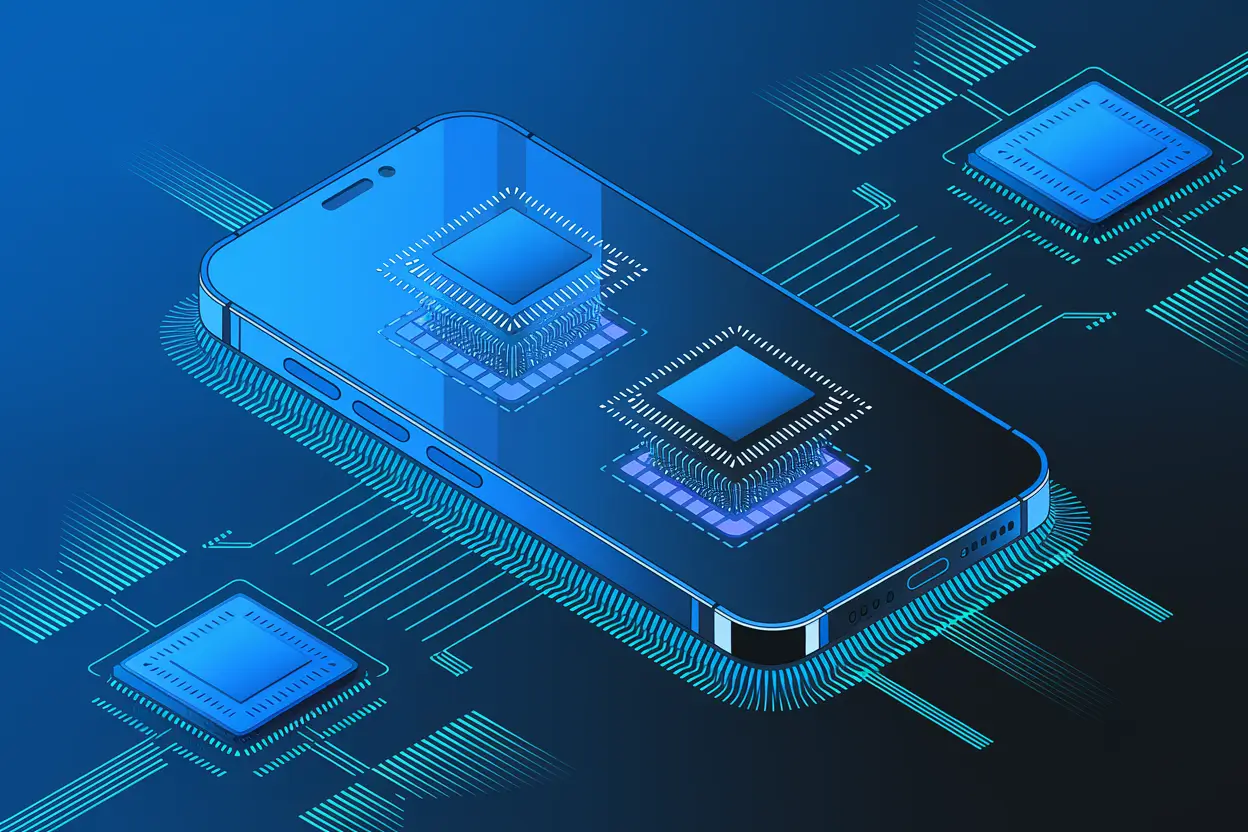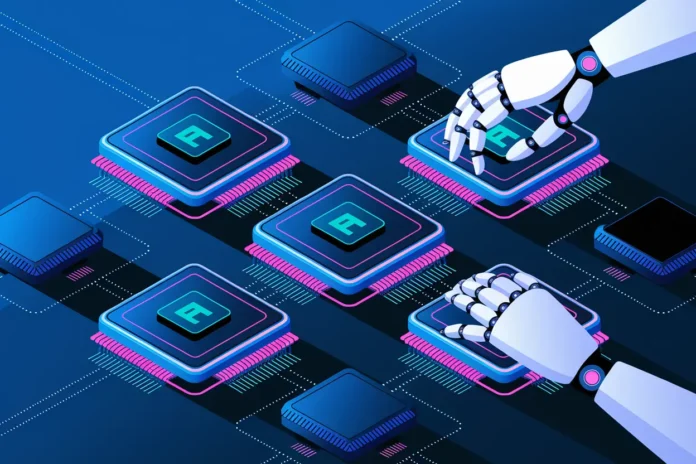AI Hardware has swiftly evolved into the foundational pillar supporting today’s most advanced digital systems. From machine learning inference to multi-billion parameter model training, AI hardware continues to revolutionize computational productivity, energy efficiency, and software capability. With a surge in investment from tech giants and strategic partnerships reshaping the landscape, this article explores key 2025 breakthroughs that underscore the vibrant future of AI hardware.
AI Hardware: Driving Technological Transformation in 2025
In 2025, the world has witnessed a dramatic acceleration of AI hardware innovation. Market signals such as NVIDIA’s $5 trillion valuation not only reflect its market cap achievements but highlight how AI hardware has become vital to the economy. These advances usher in a new wave of performance benchmarks in processing, memory architecture, and cloud integration that enhance how AI systems function globally.
NVIDIA Reaches $5 Trillion: A Landmark in AI Hardware
On November 1, 2025, NVIDIA achieved an unprecedented $5 trillion market capitalization—becoming the first company to do so. This surge is driven by explosive growth in demand for its GPUs, especially in large-scale AI applications like LLM training. NVIDIA’s focus on integrating AI hardware innovations like the Blackwell architecture into mainstream systems marks a pivotal moment for the future of computing.
Blackwell Architecture and RTX 50 Series: Redefining AI Hardware Standards
NVIDIA’s introduction of the GeForce RTX 50 Series based on Blackwell architecture in early 2025 is a testament to evolving AI hardware needs. With fourth-gen RT cores and fifth-gen Tensor cores, these GPUs deliver superior performance in deep learning and ray tracing. The RTX 50 series supports real-time inference processing, catering directly to AI researchers, gamers, and professionals.
OpenAI and AWS $38 Billion Deal: Scaling AI Hardware Infrastructure
OpenAI’s landmark $38 billion partnership with AWS is reshaping how cloud infrastructure supports AI development. By accessing Amazon’s scalable data centers alongside Microsoft Azure, OpenAI enhances model deployment speeds and stability. Strategic diversification of AI hardware backends empowers redundancy planning, boosts availability, and secures OpenAI’s position at the AI frontier.
Ironwood TPU: Google’s Response to Rising AI Hardware Demands
On November 6, 2025, Google unveiled its seventh-generation TPU, codenamed Ironwood. This AI hardware advancement delivers 4x the processing performance of its predecessor. Designed for efficiency across varied AI workloads, Ironwood empowers real-time language processing, recommendation systems, and AI edge computing, reaffirming Google’s leadership in AI hardware acceleration.
Samsung’s 2nm Chip Innovation: AI Hardware Meets Thermal Efficiency
Samsung’s AI-focused 2nm Exynos 2600 processor features groundbreaking Heat Pass Block technology. This results in a 30% drop in operating temperature compared to earlier chips. As sustainability and AI performance intersect, this innovation accommodates higher processing frequencies for AI inference while mitigating device degradation—making it a standout moment in AI hardware development.
Apple and Google’s AI Collaboration Enhances AI Hardware Integration
The $1 billion annual deal between Apple and Google to incorporate Gemini AI into Siri indicates the deepening role of AI hardware in consumer technology ecosystems. With on-device inference becoming paramount, this collaboration optimizes AI performance across iOS, escalating demand for more efficient processors and memory handling at the edge.
Microsoft Export Approval: Global Impact of AI Hardware
Microsoft’s recently approved export of 60,000 NVIDIA GB300 AI chips to the UAE demonstrates the geopolitical and economic significance of AI hardware. Beyond sales, this move enables international governments and enterprises to develop sovereign AI solutions, diversify edge inference systems, and bolster AI infrastructure resilience outside the US-centric ecosystem.
OpenAI’s ‘Aardvark’: Security through AI Hardware-Powered Agents
‘Aardvark’ by OpenAI is a GPT-5-driven security researcher operating autonomously to detect vulnerabilities in code. Leveraging next-gen AI hardware for instantaneous analysis, it offers human-readable feedback and suggestions—signaling a new paradigm in cybersecurity where intelligent hardware-backed agents manage enterprise defensive infrastructure.
The Galaxy S25 Series: AI Hardware in Mobile Devices
Samsung’s release of the Galaxy S25 series in February 2025 emphasizes the democratization of AI hardware. By embedding AI processing engines and optimized power management into mobile chips, the company introduces features like live translation, intelligent photography, and predictive user behavior—all powered by edge AI hardware accelerators.

Imagine a future where mobile devices become AI agents. The integration of AI hardware like dedicated NPUs in Galaxy S25 showcases how mainstream products serve as live prototypes for next-generation computing. Their AI hardware enables real-time ambient intelligence, seamlessly interpreting user context, processing voice commands, and adjusting environmental settings dynamically.
The Shifting Regulatory Landscape and AI Hardware Innovation
The EU’s reconsideration of provisions within its Artificial Intelligence Act reduces the regulatory burden on startups developing AI hardware sensitivity. More flexibility drives forward innovation by enabling experimentation with novel chip designs—especially among early-stage ventures contributing to the AI hardware diversification ecosystem.
Cloud Ecosystem Synergies: Strategic Role of AI Hardware
Major cloud providers like AWS, Azure, and Google Cloud significantly ramped up their AI hardware deployments in 2025. These platforms now offer developer-optimized instances powered by TPUs, GPUs, and dedicated ASICs. Enhanced memory bandwidth, multi-instance parallelism, and dynamic load balancing define the latest cloud-efficient AI hardware.
Future Outlook: Evolution of AI Hardware in Global Applications
AI hardware is gradually embedding itself into every tech dimension—from autonomous vehicles to smart cities. Enhanced photonics, quantum-class processing, and brain-inspired neuromorphic chips loom on the horizon. By 2030, the expectation is a broader coalescence—a hybridized infrastructure where classical and neural-based hardware coexists for optimal efficiency.
Challenges in AI Hardware: Navigating Power, Cost, and Complexity
Despite immense progress, industry hurdles such as heat dissipation in stacked architecture chips, billion-dollar fabrication costs, and proprietary hardware silos persist. Solving these issues requires lean production, open standards, and better cross-functional cooperation among silicon vendors, OEMs, and AI labs to make AI hardware universally scalable.
Comparing Leading AI Hardware Players: A Quick Overview
| Company | Flagship AI Hardware | Key Strength |
|---|---|---|
| NVIDIA | GB300 GPUs, RTX 50 Series | Deep learning acceleration, training |
| TPU Ironwood | Language modeling, inference optimization | |
| Apple | Siri + Gemini + Neural Engine | Consumer AI applied to voice & vision |
| Samsung | Exynos 2600 2nm | Mobile edge AI processing |
| OpenAI | Aardvark (Software + Infra) | Security research, code analysis |
Common Mistakes in AI Hardware Deployment and How to Avoid Them
- Over-Specifying Chips: Organizations often purchase more hardware than needed. Expand gradually based on use-case evolution.
- Ignoring Ecosystem Compatibility: Ensure chosen hardware integrates well with existing platforms, accelerators, and APIs.
- Undertrained Staff: Training hardware-specific skills, especially around CUDA or TensorFlow optimizations, is critical.
Actionable Tips for AI Engineers Investing in AI Hardware
- Benchmark workloads before hardware purchasing decisions.
- Stay informed on chip roadmap timelines to maximize upgrade planning.
- Develop modular codebases capable of abstracting different backends (TPU vs. GPU).
Conclusion: The Dominant Influence of AI Hardware
AI hardware sits at the nucleus of today’s digital transformations. From trillion-dollar valuations to cutting-edge collaborations, the engineering of better chips dictates how fast and usefully AI can progress. As we move forward, it’s clear that breakthroughs in processing, thermal control, and integration will define the next AI age.
FAQs About AI Hardware
What is AI hardware?
AI hardware refers to specialized computing components like GPUs, TPUs, and NPUs designed to optimize artificial intelligence operations. These chips enable faster processing of machine learning tasks with higher efficiency.
Why is AI hardware important?
AI hardware is critical as it accelerates computation for tasks like deep learning, computer vision, and NLP, allowing AI models to be trained and deployed at scale efficiently and effectively.
What are examples of AI hardware?
Examples include NVIDIA’s GPUs, Google’s TPUs, and Apple’s Neural Engines. Each performs specialized processing to support AI applications across various platforms.
How do AI and hardware companies collaborate?
Companies partner to optimize AI deployment—hardware vendors provide specialized chips while AI developers adapt software frameworks to exploit hardware capabilities.
What is the future of AI hardware?
Future AI hardware will embrace advanced manufacturing nodes, AI-specific architecture, quantum potential, and enhanced energy efficiency through neuromorphic designs.



